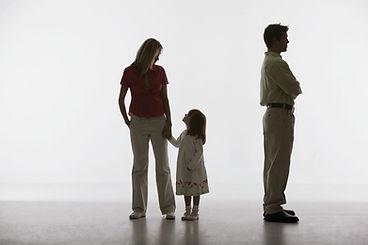BestSelfTherapy.co.uk
In-Person & Online Therapy services

Attachment Theory
Attachment theory is a psychological framework developed by John Bowlby in 1950's, that explains how the bonds we form with our primary caregivers early in life can influence our relationships and behaviours in adulthood.
Attachment Style Quiz
An attachment style quiz can help individuals understand their attachment styles a little better in relationships, which can significantly influence their romantic and interpersonal dynamics.
Look at the questions below and see which statements best reflect your thoughts, feelings, and behaviours in relationships.
Instructions:
For each statement, choose the response that best describes how you generally feel or behave in relationships.
Use the following scale:
1 = Strongly Disagree
2 = Disagree
3 = Neutral
4 = Agree
5 = Strongly Agree
Statements:
1. I find it difficult to trust others in relationships.
[1] [2] [3] [4] [5]
2. I often worry that my partner doesn't love me as much as I love them.
[1] [2] [3] [4] [5]
3. I feel comfortable depending on others and having others depend on me.
[1] [2] [3] [4] [5]
4. I prefer not to get too close to people in romantic relationships.
[1] [2] [3] [4] [5]
5. I often feel anxious in relationships, fearing that I will be abandoned.
[1] [2] [3] [4] [5]
6. I enjoy being close to my partner and feel secure in our relationship.
[1] [2] [3] [4] [5]
7. I tend to push people away when they try to get too close.
[1] [2] [3] [4] [5]
8. I find it hard to open up emotionally to my partner.
[1] [2] [3] [4] [5]
9. I feel that I can rely on my partner when I need support.
[1] [2] [3] [4] [5]
10. I often feel uneasy about my partner's commitment to the relationship.
[1] [2] [3] [4] [5]
11. I feel very comfortable with intimacy and closeness in relationships.
[1] [2] [3] [4] [5]
12. I am worried that I might be too clingy in a relationship.
[1] [2] [3] [4] [5]
Scoring Your Quiz:
1. Calculate your scores for each section.
-
High scores (4-5) on statements 3, 6, 9, and 11 may indicate a Secure Attachment style.
-
High scores (4-5) on statements 1, 2, 5, 10, and 12 may indicate an Anxious Attachment style.
-
High scores (4-5) on statements 4, 7, and 8 may indicate an Avoidant Attachment style.
2. Determine your primary attachment style:
If you score high in both anxious and avoidant categories, you may exhibit traits of a fearful-avoidant Disorganised Style
The Four Types of Attachment Styles:
1. Secure Attachment
This occurs when caregivers were responsive and consistent.
-
As a result, individuals feel safe and supported, leading to healthy relationships and a positive self-image.
-
Comfortable with intimacy and autonomy, trusting others and feeling secure in relationships.

2. Anxious Attachment
This arises from inconsistent caregiving, where the caregiver was sometimes nurturing and other times neglectful.
-
Individuals may develop a strong desire for closeness, but also fear abandonment, leading to anxiety in relationships.
-
Often worries about partner's love or commitment, seeks constant reassurance, and may appear clingy.

3. Avoidant Attachment
This stems from caregivers who were emotionally distant or unresponsive.
-
As a result, individuals may struggle with intimacy and prefer to keep their distance in relationships, valuing independence over closeness.
-
Finds it hard to open up or trust, and may push others away.

4. Disorganised Attachment
This develops from chaotic or traumatic environments where caregivers may have been a source of fear.
-
People with this attachment style may have conflicting behaviors in relationships, struggling with fear and trust issues.
-
Desires closeness but feels uncomfortable with intimacy, leading to mixed feelings about relationships.


Attachment theory provides valuable insights into how early experiences might shape our adult relationships and self-perception.
By understanding your attachment style, you can get valuable insights into emotional bonding and communication patterns, enabling both of you to address issues more effectively and strengthen your relationship.
Importance of Understanding Attachment Theory:
Personal Growth: Understanding your attachment style can help you recognise patterns in your relationships, leading to healthier dynamics and improved emotional well-being.
Relationship Improvement: By being aware of attachment styles, you can work on building secure attachments with friends and partners, fostering a more fulfilling emotional life.
Therapeutic Insights: For those seeking therapy, knowing about attachment styles can facilitate deeper discussions about past experiences and current relationship challenges.
In Romantic Relationships:
-
Securely attached individuals tend to have healthier, more stable relationships. They communicate openly and manage conflicts well.
-
Anxiously attached individuals may become overly dependent on partners for emotional support and worry excessively about their relationships.
-
Avoidantly attached individuals may struggle with intimacy, often keeping partners at arm’s length and avoiding deep emotional connections.
-
Disorganised attachment can lead to tumultuous relationships, characterized by confusion and fear regarding intimacy.
In Friendships and Social Interactions:
Secure attachment fosters lasting friendships and a strong support system.
Anxious individuals might find themselves feeling insecure about friendships, while avoidant types may have trouble making close friends.
Disorganised individuals may struggle to trust others, leading to erratic social interactions.
With Self-Perception:
Our attachment style can influence how we view ourselves. Securely attached individuals generally have a positive self-image, while anxiously attached individuals may struggle with self-esteem, and avoidant individuals may have a harsh view of their emotional needs.
... with Delyth Cole